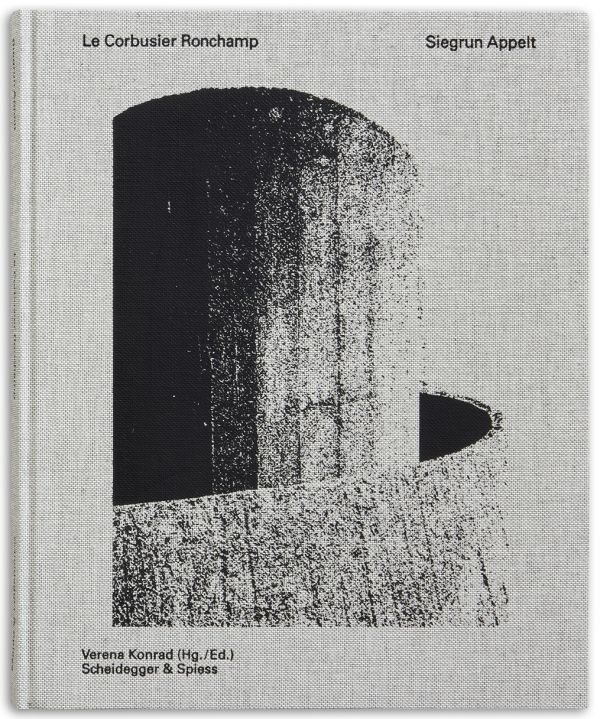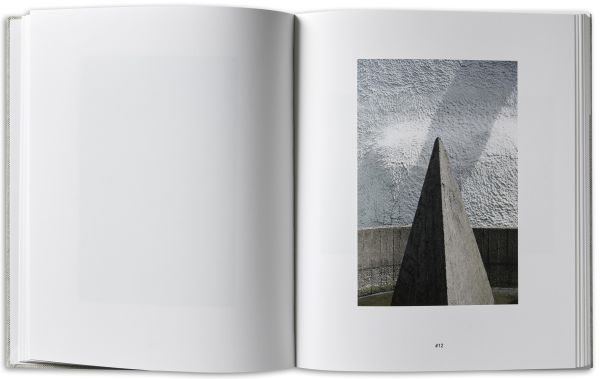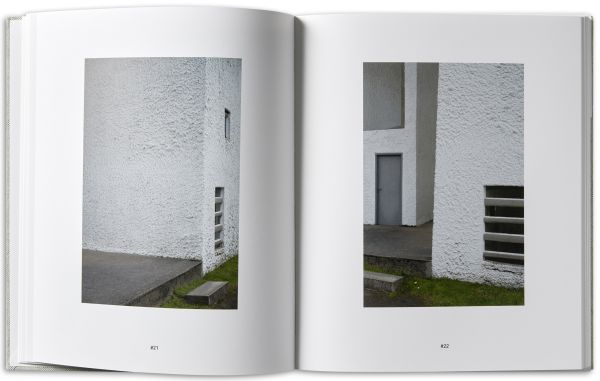Le Corbusier Ronchamp
Siegrun Appelt
An entirely new artistic approach to Le Corbusier’s iconic chapel of Notre-Dame-du-Haut in Ronchamp
GVA Gemeinsame Verlagsauslieferung Göttingen
GmbH & Co. KG
P.O. Box 2021
37010 Göttingen
Germany
+49 551 384 200 0
info@gva-verlage.de
Le Corbusier‘s chapel Notre-Dame-du-Haut in Ronchamp is arguably the most famous modern religious building and a UNESCO world heritage site. It has been photographed by millions of people, including some of the most distinguished architectural photographers. In this book, Austrian artist Siegrun Appelt takes an entirely new approach to looking at the iconic structure, distinct from all her famous predecessors. Appelt focuses with an utter concentration on details, creating compositions of the highest sensitivity and precision. Her images highlight the place’s spatial structure and lines, Le Corbusier’s ingenious direction of light, as well as surfaces and passages. The images can be read as hints to these details and at the same time invite a conclusion from detail to the whole.
Published alongside the images is a dialogue between Claudia Kromrei and Otto Kapfinger, in which they investigate the potential of photography to show Le Corbusier’s means of expression and discuss the visualization and perception of material and immaterial elements of this icon of twentieth-century architecture.
Awarded with a Bronze medal in the 23/24 German Photo Book Award, category Coffe Table Book.
«Kaum je wurde der Geist des Weltkulturerbes besser eingefangen.» Marc Peschke, Rheinpfalz
«Das Meisterwerk mit enormer Freude am Detail aus bislang nicht bekannten Perspektiven abgebildet. Ein minimalistischer Genuss.» Frankreich Magazin
«In einem dialogischen Beitrag beleuchten Claudia Kromrei und Otto Kapfinger das Potenzial der Fotografie, Le Corbusiers architektonische Ausdrucksmittel darzustellen, und diskutieren Wahrnehmung und Sichtbarmachung von materiellen und immateriellen Elementen dieser modernen Ikone.» Herbert Pardatscher-Bestle, Bücherrundschau
«Die Künstlerin schafft Bildkompositionen von grösster Sensibilität und Präzision, die das räumliche Gefüge, die Linien- und Lichtführung, die Oberflächen und Übergänge verdeutlichen. Die Bilder können als Hinweis gelesen werden, die sowohl für sich stehen als auch den Schluss vom Detail zurück zum Ganzen zulassen.» Michi Baumann, Kulturküche






